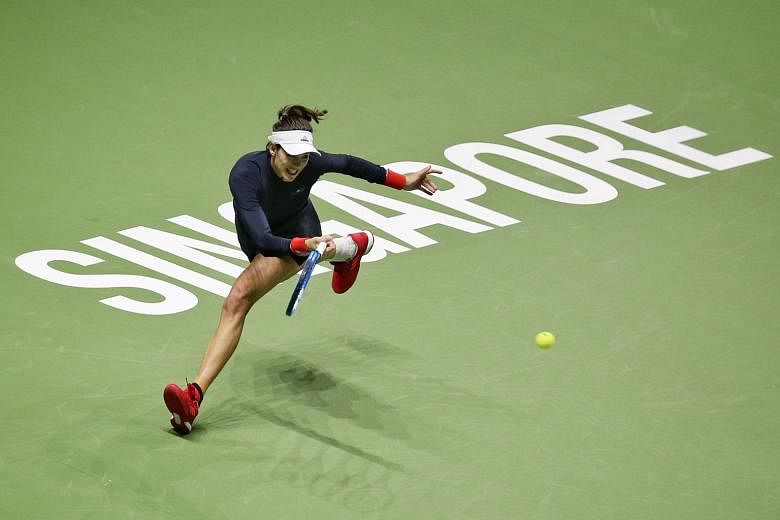It was an ambitious target set by former Community Development, Youth and Sports Minister Vivian Balakrishnan in 2008 for the Singapore sports industry - a $2 billion annual contribution to Singapore's gross domestic product and the creation of 20,000 jobs by 2015.
While there has been undoubted growth driven by a slew of marquee events like the Formula One Singapore Grand Prix, tennis' WTA Finals and the HSBC Singapore Rugby Sevens, industry experts and analysts are doubtful the $2 billion goal has been reached.
Size ultimately matters, and the country's lack of scale has placed a cap on the number of mega sporting events - and fans - that can be brought in amid competition in the regional market.
This has also limited the ability of local sports brands to cash in on their products via the selling of television or media rights.
Said CIMB economist Song Seng Wun: "We do get a good number of sporting events here, but I think it's still been a hard slog (to reach the target) and we might be short of it.
"The challenge has always been a small market here and pulling in visitors remains difficult especially since these big sporting events are not exclusive to us."
Defending English Premier League champions Chelsea, for instance, arrived here for the pre-season International Champions Cup (ICC) in July after playing London rivals Arsenal in Beijing.
- F1 SINGAPORE GP INTERNATIONAL TOURISTS SINCE 2008
450,000
WTA FINALS 2017 FANS133,000
Unlike China or India, the Republic's sports industry does not have a huge domestic population (5.6 million) to fall back on.
"In a market the size of Singapore, it's always difficult for sports to be commercially viable," said Deloitte Singapore and South-east Asia sports business group leader James Walton.
"It's a virtuous or vicious cycle of sorts. If you have a small population you have a small fan base, which makes it hard to attract sponsors and find the money to attract and pay top talent, and in turn depresses the value of media rights.
"As we've seen from One Championship (which is looking to enter India next year), ultimately growth is going to come from other parts of Asia and that's not something the S-League, for example, can do.
"The cynical among us would say that if (the $2 billion target) has been met, there would have been an announcement at some point."
The local sports industry's GDP contribution was estimated at $696 million in 2004, according to the Economic Development Board.
In remarks made in 2009, Dr Balakrishnan said it had crossed the $1 billion mark in 2007.
The Ministry of Trade and Industry, Ministry of Culture, Community and Youth (previously MCYS) and Singapore Tourism Board could not provide the latest figures on industry value and job creation. All three declined to comment.
It would be fair to say there has been growth though.
Since the inaugural race in 2008, the Singapore GP - which has been extended to 2021 - has attracted 450,000 international visitors and has accounted for about $1.4 billion in incremental tourism receipts over the last decade.
This year's WTA Finals drew 133,000 fans, the largest attendance since it was first held here in 2014 while established events like the Standard Chartered Singapore Marathon - an International Association of Athletics Federations Gold Label race since 2012 - are constantly seeking to elevate their status even higher.
Lagadere Sports' vice-president of business development Malcolm Thorpe pointed to the construction of the $1.33 billion Singapore Sports Hub, completed in 2014, as the "most significant large-scale development" to date.
"Investment in sports infrastructure plays a central role in the development of the wider domestic sports ecosystem, while connecting sports content and community participation," he said.
"We have seen this come to pass through the Sports Hub's ability to host events large and small."
The increasing popularity of previously niche sports like mixed martial arts and e-sports in Asia bodes well for local-based promoters.
In July, mixed martial arts organisation One Championship, headquartered in Singapore, raised a total capital of US$100 million (S$134 million) and will stage a record 24 live events next year across Asia.
National Institute of Education assistant professor and Institute on Asian Consumer Insight Fellow Leng Ho Keat believes that Singapore's sports industry has yet to reach a tipping point.
He added: "We could be seeing more smaller niche events here that leverage on Singapore's infrastructure in terms of the facilities and expertise, at the neighbourhood and community level."
- The Business of Sport is a monthly series that explores the current trends and talking points of the emerging sport industry.


